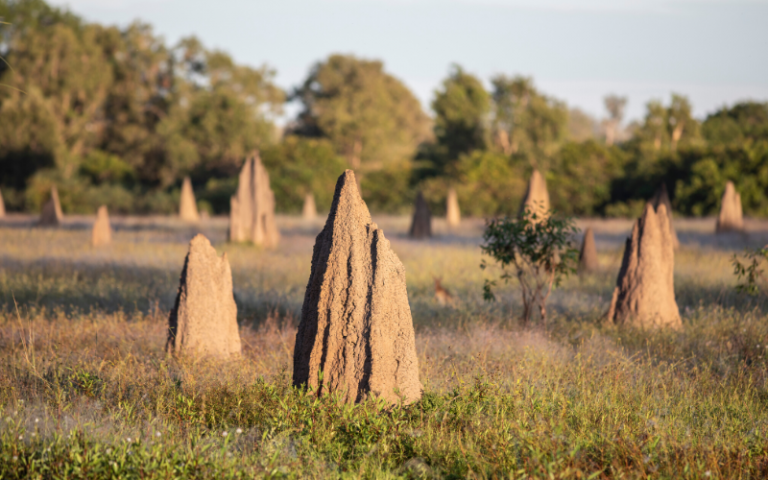One of the largest and most complex megalopolises on Earth is almost unknown. And it wasn't built by man, but by termites. We are in Brazil, particularly in the forest of Caatinga. Here scientists have used satellite images to calculate the size of the expanse of earth mounds raised by termites. They discovered that there are about 200 million earth cones up to 8 feet high and up to 30 feet wide. And all these together cover an area of about 90,000 square miles. In other words, it's about the size of UK.

Topics covered
One of the largest and most complex megalopolises on Earth is almost unknown. And it wasn’t built by man, but by termites. We are in Brazil, particularly in the forest of Caatinga. Here scientists have used satellite images to calculate the size of the expanse of earth mounds raised by termites.
They discovered that there are about 200 million earth cones up to 8 feet high and up to 30 feet wide. And all these together cover an area of about 90,000 square miles. In other words, it’s about the size of UK.
Termites Building with Waste Material
Roy Funch is a scientist from the Universidade Estadual de Feira de Santana, Brazil, who has studied these constructions for years. He has known these sophisticated architectural works since the 1980s. But it is only recently that deforestation has made the blocks of land stacked with termites more recognizable.
These social insects have a habit of erecting complex tower-shaped buildings with intricate tunnel systems in which to swarm. The murundus (from Portuguese), however, are something different. They are not nests for these insects. In fact, they are heaps formed from the earth that animals discard while working to build underground tunnels. In hundreds, even thousands of years, the earth set aside piles up in these cone shaped structures without internal structures.
An Area Larger than Expected
In 2015, Funch and colleagues estimated there were about 90 million cones, for a volume of land equivalent to 900 pyramids of Giza. New and more accurate Google Earth images suggest that there are 200 million cones with a volume equivalent to 4000 pyramids of Giza. It looks more like the work of a geological force than a set of organisms.
For comparison, these cones occupy an area more or less equivalent to the Great Barrier Reef, which is an example of a multispecies bioengineering structure. However, these cones are built by a single animal species.
Almost 4000 Years Old
At first, Funch thought each cone was a colony of insects. However, by analyzing the specimens in each of them he realized that a single colony may be responsible for the formation of several cones. The tactic of expanding into the territory would then serve to occupy vast tracts of forest and gain access to as many leaves as possible. Soil samples taken from the murundus finally revealed their age. The youngest is 690 years old, while the oldest is 3,820. We can therefore assume that they are intergenerational structures.









